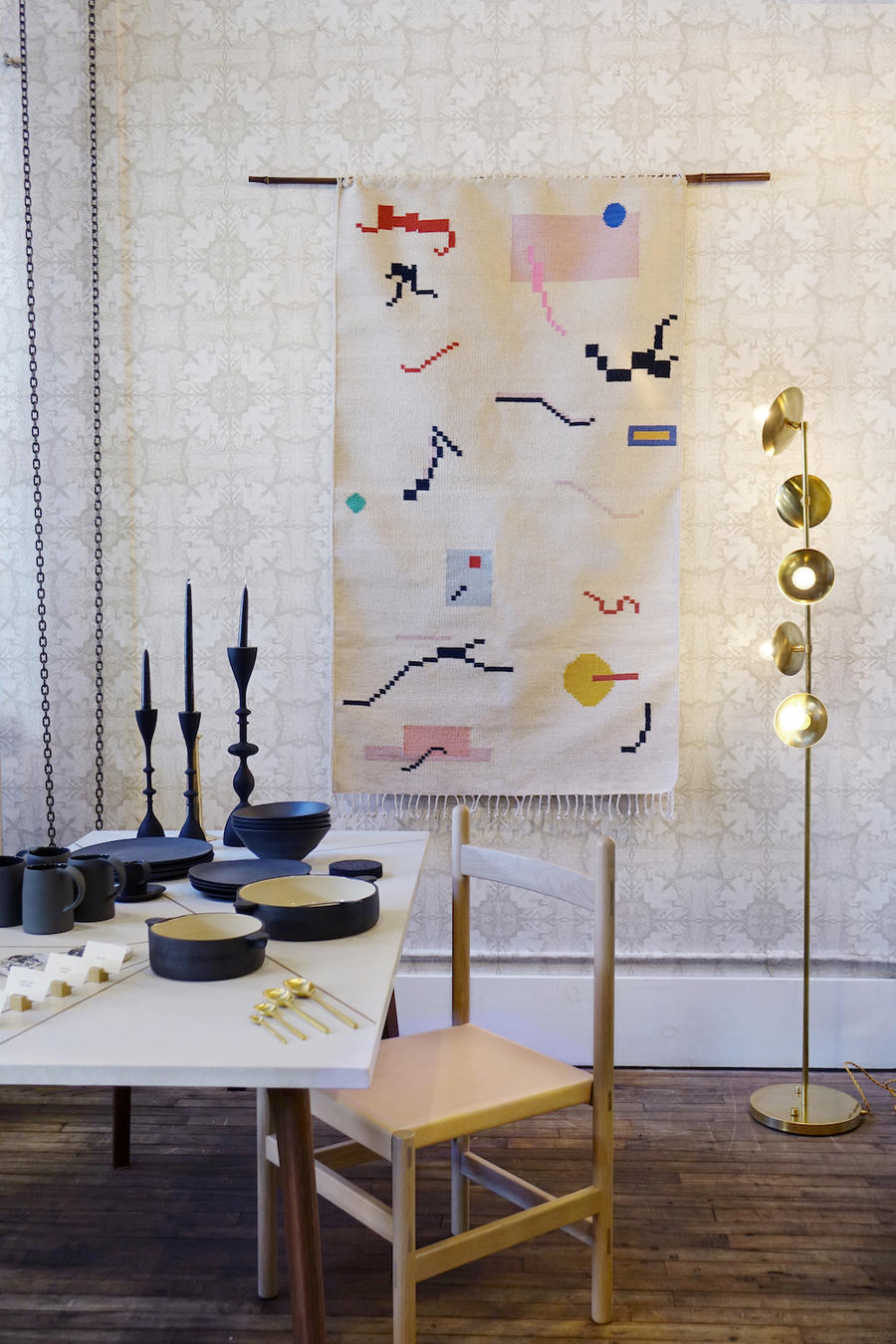This is the second in a series of retail-focused columns from designer and retail entrepreneur Michele Varian, who has operated her own shop in New York’s SoHo neighborhood since 2001.
The world changes and paradigms shift—that’s an inevitable part of life. How we act and interact, how our private and public spaces are designed and engaged with, what we have access to, and the ways we shop, eat, play, work and live are all constantly in flux. And if we want to participate in the future of any of those things in a responsible way, it is essential, at the very least, to strive to understand those changes.
For multibrand brick-and-mortar retailing, boy, has the paradigm shifted. I want to take a step back to identify what that old paradigm actually looked like for interiors and home goods retail. Because we’re so prone to getting lost in the “new and shiny,” I’ll call out the strengths of that model, identifying how aspects of both the old-school and new-school models can lead us toward a productive, progressive—and most importantly, responsible—future for design-forward brick-and-mortar.

Ye Olde Paradigm
The “old paradigm,” for starters, consisted of a host retailer—a store owner who essentially operated as a curator—who would go to trade shows to find brands for their store and place orders for inventory; those orders would get delivered to them to sell to their customers. These retail stores were the main distribution channel for brands (who were designing and fabricating products) to connect with consumers.
In this model, retailing was streamlined—to the benefit of the brands and the host retailers. In addition, the retailer had complete autonomy executing their end of the bargain: They were the gatekeepers of the sale, and the retail prices were theirs to determine. If another store owner in another region was selling a brand or product at a different price point, it didn't matter; it was widely accepted that regional sales were different—because rents, incomes, and spending power all vary between regions. And it was all okay, because it was the customers themselves—not just the stores—that were localized. (In other words, people weren’t as connected to one another or to other places as they are today.) It was the halcyon days of retailing: For stores and for the brands they carried, it was the simple life.
As The Digital Age Turns, the Model Shifts
Well, a sort of simple life. There were barriers to participation in the old model, just as there are at every stage of the evolution of retail: Namely, costliness for brands and retailers to travel to trade shows, which were mostly on the West or East Coast, and especially for the brands to exhibit at them. With the onset of internet retailing, new barriers to participation swelled. For multibrand brick-and-mortar stores, their consumers suddenly had access to other outlets that were selling the same products. As a result, if prices in one region or at a certain retailer were advertised online at a lower cost, other retailers would slash prices to compete; then other retailers would do the same, and on and on, in an attempt to stay competitively priced. Eventually, the entire model was under threat. Retailers all over were suffering from diminished margins, and both retailers and their brands were suffering from compromised perceived value of products sold.
More recently, e-commerce has allowed brands to sell directly to consumers, bypassing host retailers altogether—another cause of today’s margins-reducing, value-encroaching scenario of retail distress that has created a race to the bottom.
Ideals of the Design Retail Visionary
What the old model inspired was the profound agency of the visionary tastemaker. The buyers (retailers) were old-school influencers; maintaining a curated selection that reflected their taste was what allowed them to thrive and connect consumers with the brands and products they hosted in their stores. There was value to introducing a design vision through finely curated retail experiences, rooted in the personal connections between brand and host retailer, on the heels of the trade shows. This curation surfaced in product choice, but also in presentation, merchandising, and general “voice” of the shopping experience, where multibrand shopping spaces were not only distinguishable from one another, but validated and appreciated in and of their uniqueness.

Now, it seems that VC-backed, single-offering home goods companies are the only ones who can afford to enter the market; in turn, the tastemaker ideal becomes lost to the whims of a room of suits. These new brands rely on vague retail narratives rather than creating thoughtful retail identities, and they promote a commercial ethos siphoned from the masses, instead of carefully crafted for them. This behavior has reduced the market’s creativity, allowing for lazy consumerism (which we’re all prone to enjoying, at times!), lazy retail leadership—and ultimately, a mass reduction in personalization.
This specificity of curation does not need to disappear with the new model. Yes, online retailing has revealed trends in consumer habits, and tapping into e-comm’s ubiquitous spartan visual identity may prove catchy in the short-term. But what transitions consumers from one-time purchasers to loyalists is connection with a specific retail identity—where they know your space is the only space they can get that thing. It is a curatorially specific retail experience, inspired by old-school market habits, but fully embracing of, and operational within, the digital marketplace.
How-to in the New Age of Retail
Design retailers are still gatekeepers for sales. They still hold the power to provide incredible product and work to audiences and consumers thirsty for originality. It’s time to re-embrace the storyline of the retail influencer, and reject the narrative of the retail apocalypse. Multibrand brick-and-mortar retail is poised to use the digital tools that have threatened it to its own advantage. In my next column, I’ll outline what those tools are and how we can put them to responsible use as design industry retailers.
____________
 Michele Varian is a designer, micro-manufacturer, retailer and retail entrepreneur. In 2018, she co-founded Guesst.co, a digital matchmaking service for brick-and-mortar retailers. She is also a prolific small-business advocate and a longtime SoHo resident. At the Michele Varian shop in New York, Varian’s own collections of textiles, pillows, wallpaper, lighting and furniture are on display alongside furniture and accessories by more than 100 designers and over 70 American fine jewelry designers. Her Case Study columns are inspired by Design Talk by MV, her resource-based editorial series.
Michele Varian is a designer, micro-manufacturer, retailer and retail entrepreneur. In 2018, she co-founded Guesst.co, a digital matchmaking service for brick-and-mortar retailers. She is also a prolific small-business advocate and a longtime SoHo resident. At the Michele Varian shop in New York, Varian’s own collections of textiles, pillows, wallpaper, lighting and furniture are on display alongside furniture and accessories by more than 100 designers and over 70 American fine jewelry designers. Her Case Study columns are inspired by Design Talk by MV, her resource-based editorial series.





























